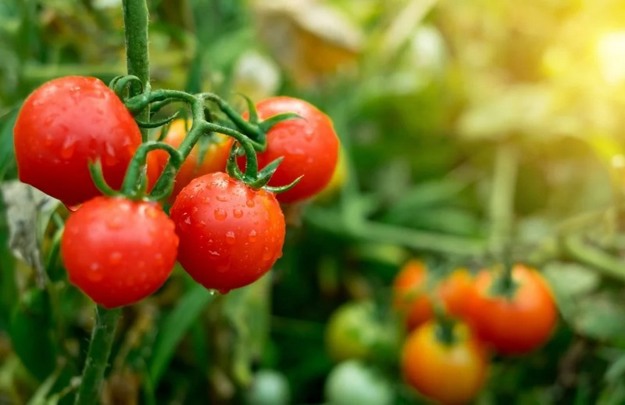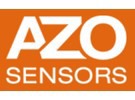The tomato (Solanum lycopersicum L.) is one of the high-value crops in the global market, mainly cultivated under irrigation. Tomato yield is often hampered due to unfavorable conditions, including climate, soil, and water availability. Sensor technologies have been developed and installed across the world to help farmers assess growing conditions, such as water and nutrient availability, soil pH, temperature, and topology.
Factors Related to Low Productivity of Tomatoes
The demand for tomatoes is high for both fresh consumption and industrial (processing) markets. Low production of tomatoes has been observed in many agricultural sectors, such as Indonesia, where mainly traditional farming systems are followed. Implementing technologies, such as Internet of Things (IoT) based applications and sensors, have substantially improved the yield of various crops, including tomatoes.

The lack of application of heterogeneous and advanced sensors due to inadequate information also contributes to low agricultural production. Particularly for tomato plantations, smart water management plays an important role in avoiding crop failure.
Soil moisture content is another factor determining tomato yield because it is crucial for transferring nutrients and other compounds from the soil to the plant. It is important to maintain plant temperature as it influences leaves and fruit maturity.
The optimal soil moisture content for tomato plants is between 60% and 80%. The ideal air temperature for maximum tomato yield ranges from 24 to 28 degrees Celsius. Beyond this temperature range, plant growth and flowers and fruit development are not optimal. If soil conditions and temperatures fluctuate significantly, low and stunted plant growth occurs, and the tomatoes do not ripe evenly.
Sensors Used in Tomato Cultivation
Several technologies have been developed, mainly based on proximal and remote sensing approaches, for precision water management. To determine the plant water content, sensors have been designed that assess the physiological condition of the plant and its surrounding environment. For instance, a sensor based on terahertz radiation combined with psychrometry can determine the leaf pressure volume.
Sensors used to determine plant water content are based on multiple tools and techniques that include electrical impedance spectroscopy, near-infrared (NIR) spectroscopy, ultrasonic techniques, and leaf patch clamps. Soil moisture sensors and electrical conductivity sensors are used to detect soil structures, salinity, and conductivity. Some of the plant sensors used to improve tomato farming are discussed below.
Xylem Sap’s pH Sensor
It is important to monitor plant biomarkers in xylem sap because it provides essential information that can help prevent crop losses. However, it is not only difficult to determine these biomarkers, but regular monitoring of xylem sap could be an expensive strategy.
Professor Jim Haseloff and his team at the University of Cambridge have recently developed a low-cost electrochemical sensor to monitor pH in xylem sap. This sensor was developed using ruthenium oxide nanoparticles due to its superior chemical stability, biocompatibility, and its ability to selectively react with hydrogen ions.
The sensor film is 80 nm thick, and its roughness is below 3 nm. This sensor can be directly implanted into the xylem of a tomato plant. The initial design of the sensor was improved, i.e., the noise was significantly reduced by using a cellulose-based coating on the electrodes.
Additionally, a heating system was incorporated to ensure homogeneity. The final design enabled the deposition of nanometrically thin films (sensors) into the xylem that can detect a range of analytes in a cost-effective manner.
Notably, this sensor could be successfully implanted into the tomato plant to monitor xylem sap pH for at least 10 hours. This sensor can continuously monitor pH in xylem sap. This sensor was coupled with another sensor, i.e., the Wio Terminal device, that enabled the measurement of environmental temperature, humidity, and volatile organic compounds (VOC) concentrations. All data are wirelessly sent to a server and processed.
Soil Moisture and Temperature Sensors and Automated Watering Systems
Tomatoes require a proper watering system for optimal yield. An increase in water scarcity has threatened agricultural production and food security. Applying effective sensors has enabled the optimal use of water resources and maximizing crop yield.
Soil moisture sensors can assess the water content of the soil. A recently designed soil moisture sensor comprises two conducting plates. When these plates are exposed to the conducting medium, i.e., water, the electrons from the anode will migrate toward the cathode. This electronic movement will generate an electric current that can be detected through a voltmeter. This sensor can detect the presence of water in the soil.
In some cases, soil sensors are coupled with a thermistor that can measure temperature and humidity simultaneously. Data from these sensors are processed, and a single-wire bi-directional data output is generated, which is fed into an automatic flushing system. When temperature and humidity data reach a specific threshold, the switch to the water pump is automatically turned on or off.
Bioristor - A Bioelectronic Sensor
Bioelectronics are used to monitor plants’ physiological processes and their morphological traits. Recently, an in vivo Organic Electro Chemical Transistor (OECT)-based sensor has been developed, which is popularly known as a bioristor. This sensor has been used in tomato cultivation to assess alterations in the composition of the plant sap flowing in both the xylem and phloem in growing tomato plants. This sensor can function in real-time and in vivo without interfering with plant functions.
Since the bioristor can be directly implanted within the plant stem, it provides in vivo observations of a plant’s physiological mechanisms associated with ion movements under stress conditions, such as drought, salinity, vapor pressure deficit, and an increase in relative air humidity. Bioristor is also used for pathogen detection and pest management. This sensor is also used to monitor the water status of a plant.
For more information:
AzoSensors
azosensors.com
